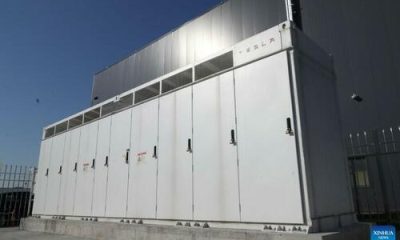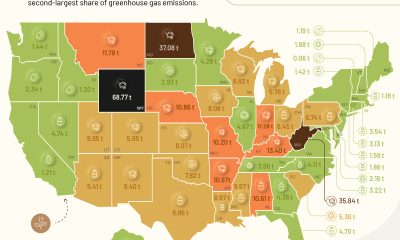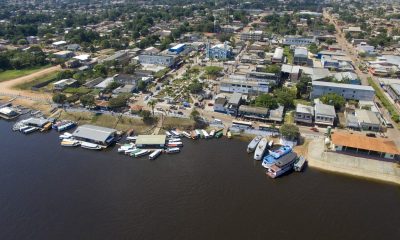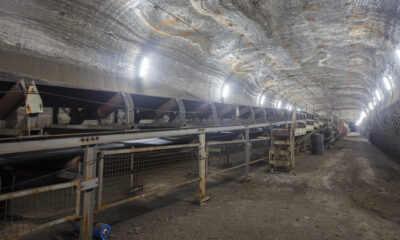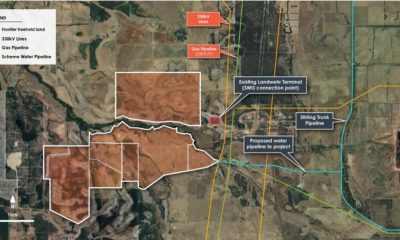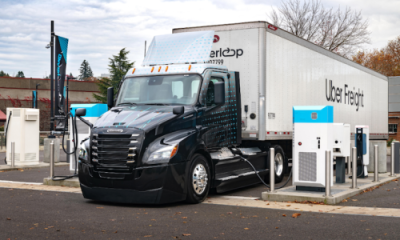Energy & Critical Metals
The US Needs To Double The Size Of Its Energy Grid
The US Needs To Double The Size Of Its Energy Grid
By Haley Zaremba of OIlPrice.com
In order to keep up with the expansion of renewable energy…
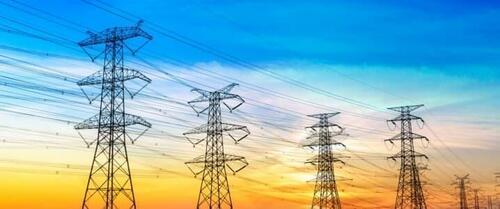
The US Needs To Double The Size Of Its Energy Grid
By Haley Zaremba of OIlPrice.com
In order to keep up with the expansion of renewable energy production capacity, the United States will have to more than double the current size of the electric grid. Stimulus from both the public and private sectors are hitting their intended mark, and the clean energy sector is booming. However, much of the potential environmental benefits of electrification will be completely wasted if we don’t have the power lines and grid capacity to transmit that power from where it’s being produced to where the demand is concentrated.
Meeting global climate goals requires a rapid and massive expansion of renewable energy production capacity. The urgency of this imperative is difficult to overstate; indeed, the United Nations has announced a code red for humanity. Building sufficient wind and solar farms to power the clean energy transition will require overcoming three major hurdles: finding enough land at an affordable price, building up the power grid to support the influx of electricity, and fixing the archaic and inefficient permitting process that governs these processes.
Mass-scale solar and wind farms require a whole lot of land, which means that these projects are increasingly pushing into rural areas where they often are not wanted. “Utility-scale solar and wind farms require at least ten times as much space per unit of power as coal- or natural gas–fired power plants, including the land used to produce and transport the fossil fuels,” McKinsey recently reported. “Wind turbines are often placed half a mile apart, while large solar farms span thousands of acres.” This poses a number of interconnected challenges to the spread of clean energy: competition over land, litigation and protests from the localities where these projects are planned, and once the project is finally complete, transmitting that energy all the way from the rural areas with space for solar and wind farms to the urban centers where it is needed.
To meet these needs, according to the U.S. Department of Energy, the country will need 47,300 gigawatt-miles of new power lines by 2035. That represents a 57% expansion of the existing grid. Meeting that goal will require a two-fold increase in the current rate of construction. The issue is not building materials or even labor – although that’s another challenge in and of itself. The real issue is the aforementioned glacial pace of the bureaucratic processes which underlie permitting and oversight of clean energy projects as well as grid expansion.
Building power lines alone is an enormous bureaucratic hurdle that can take years to gain approval. The average review of renewable energy projects takes about 3.5 years, but there are cases in which a single transition line took over a decade to be completed – in one particularly egregious example, the TransWest Express project took 18 years to get approved, and is expected to take another five years to be completed.
The grid doesn’t just need to be expanded, it also needs to be improved. The United States power grid is an aging and fractured system that will require major updates to bring it into the modern era and to prepare it for a massive influx of variable energy that it wasn’t designed to handle. A recent opinion piece in the New York Times argues that the best way to solve these overlapping problems is to remove all of the overlapping systems and institutions that are currently tasked with reviewing and approving these projects and giving this responsibility to a single entity at the Federal level. In doing so, the process can be streamlined and the grid itself can be more interconnected than before, providing important safety fallbacks if – or when – a part of the grid fails.
Fixing the presently nightmarish permitting and approval system will be integral to decarbonizing the United States economy, maintaining energy security across the country, and making sure that the efforts already underway to decarbonize the nation’s energy mix are not squandered. It’s great that wind and solar capacity are being added at a record-breaking rate, but it’s all a waste if, once completed, there’s no permit allowing them to plug into the grid – or if there’s no grid at all.
Tyler Durden
Thu, 05/11/2023 – 11:20
renewable

Uranium Exploration Company Announces Additional Staking in the Athabasca Basin
Source: Streetwise Reports 12/22/2023
Skyharbour Resources Ltd. announced an update from its Canada-based Falcon Project along with additional…
Tesla Launches New Mega Factory Project In Shanghai, Designed To Manufacture 10,000 Megapacks Per Year
Tesla Launches New Mega Factory Project In Shanghai, Designed To Manufacture 10,000 Megapacks Per Year
Tesla has launched a new mega factory…
Giving thanks and taking stock after “a remarkable year”
An end-of-year thank you to our readers, industry colleagues and advertisers before Electric Autonomy breaks from publishing until Jan. 2
The post Giving…


